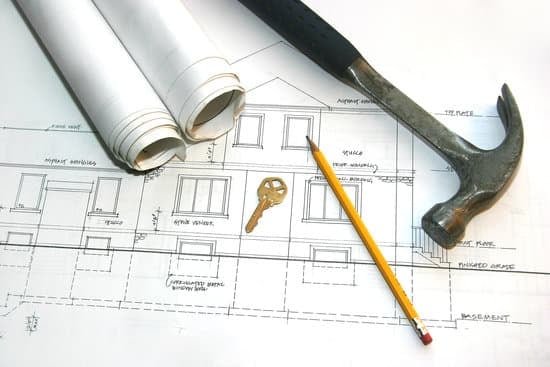Are you wondering how much home improvements would cost you? Whether you are considering renovations, remodeling, or additions to your home, it’s important to have a clear understanding of the expenses involved. In this article, we will delve into the factors that affect the cost of home improvements, how to set a budget, and the various financing options available.
We will also explore the pros and cons of DIY versus hiring a professional, as well as hidden costs to consider when budgeting. By the end of this discussion, you’ll be equipped with the knowledge needed to plan and budget for successful home improvement projects.
When it comes to home improvements, one of the first questions that often comes to mind is: “How much will it cost?” Setting a budget is essential in determining how much you can afford and what types of improvements are feasible for your financial situation. Understanding the cost factors involved in home improvements will help you make informed decisions and avoid any financial surprises along the way.
From materials and labor costs to the overall scope of the project, there are various factors that can impact the cost of home improvements. It’s crucial to take these elements into consideration when planning your project.
In addition to understanding these cost drivers, exploring different types of renovations, remodeling options, and additions will give you insight into the potential cost ranges for each type of improvement. So if you’re ready to gain a better grasp on how much your desired home improvements may cost, keep reading.
Setting a Budget
When it comes to setting a budget for home improvements, it’s essential to take a realistic look at your finances and determine how much you can afford to spend. The first step is to assess your current financial situation and establish a clear understanding of your income, expenses, and existing debt.
By creating a detailed budget that outlines your monthly cash flow, you can identify how much money you have available for home improvements without jeopardizing your overall financial stability.
Another important factor in determining your budget is considering the potential return on investment (ROI) for the home improvements you are planning. While it’s important to create a comfortable and aesthetically pleasing living space, it’s also crucial to consider how much value these improvements will add to your property.
Researching the average ROI for specific types of renovations or remodeling projects can help you make informed decisions about where to allocate your budget for the best long-term financial benefit.
In addition to assessing your financial situation and evaluating potential ROI, it’s also helpful to prioritize the most critical home improvement projects based on safety, functionality, and maintenance. By focusing on essential repairs or upgrades that directly impact the livability and structural integrity of your home, you can allocate your budget more effectively and avoid overspending on less critical cosmetic enhancements.
This approach allows you to address necessary maintenance issues while still enhancing the overall look and feel of your home within a reasonable budget.
Factors Affecting Cost
When it comes to home improvements, the cost can vary significantly depending on several factors. Understanding what influences the cost of your project is crucial for setting an accurate budget and avoiding any financial surprises. The three main factors that affect the cost of home improvements are materials, labor, and project scope.
- Materials: The type and quality of materials you choose for your home improvement project will have a significant impact on the overall cost. From flooring and cabinetry to fixtures and appliances, the options are vast, with prices ranging from budget-friendly to high-end luxury. It’s important to carefully consider your material choices based on both your aesthetic preferences and your budget.
- Labor: The cost of labor is another major factor in determining the total expense of your home improvement project. Whether you’re hiring a contractor, plumber, electrician, or other skilled professionals, their rates will contribute to the overall cost. Additionally, the complexity of the work required will also influence labor costs, as more intricate projects typically require more time and expertise.
- Project Scope: The size and scale of your home improvement project will ultimately determine its cost. Whether you’re looking to make minor renovations or undertake a complete remodel or addition, the scope of work directly impacts the overall expenses.
Larger projects often involve higher material and labor costs due to their complexity and extended timeline. It’s essential to carefully assess the scope of your project before setting a budget to ensure that you account for all potential costs involved.
In summary, when planning for home improvements, it’s critical to consider how materials, labor, and project scope will affect the overall cost. By thoroughly researching these factors and obtaining multiple quotes from different suppliers and contractors, homeowners can gain a better understanding of what to expect in terms of expenses. This knowledge will enable them to make informed decisions about their budgeting and ultimately achieve successful home improvement outcomes within their financial means.
Types of Home Improvements
The cost of home improvements can vary greatly depending on the type of project you have in mind. Renovations, remodeling, and additions all come with their own unique cost ranges that homeowners should be aware of before starting a project. Renovations typically include smaller scale updates such as painting, flooring, or updating fixtures and can cost anywhere from $1,000 to $20,000.
Remodeling projects involve more extensive changes to the layout or structure of a home and can range from $18,000 to $75,000 on average. Finally, additions, which involve adding extra square footage to a home, can cost anywhere from $20,000 to over $100,000 depending on the size and complexity of the addition.
It’s important for homeowners to understand these cost ranges when planning their projects so they can set realistic budgets and expectations. Factors such as materials, labor costs, and the scope of the project will all contribute to where your project falls within these ranges. Additionally, location plays a significant role in determining costs; urban areas tend to have higher labor and material costs than more rural areas.
In order to get a more accurate estimate for your specific project, it’s best to consult with professionals in the industry who can provide quotes based on your individual needs. By being aware of these cost ranges ahead of time, homeowners can be better prepared when budgeting for their home improvement projects.
| Types of Home Improvements | Cost Range |
|---|---|
| Renovations | $1,000 – $20,000 |
| Remodeling | $18,000 – $75,000 |
| Additions | $20,000 – Over $1000 |
DIY vs Hiring a Professional
When it comes to home improvements, one of the biggest decisions you’ll have to make is whether to tackle the project yourself or hire a professional. Both options have their own set of pros and cons that should be carefully considered before making a decision.
One of the main advantages of choosing the DIY route is cost savings. By doing the work yourself, you can avoid paying for labor, which can often be one of the most expensive parts of a home improvement project. Additionally, taking on a DIY project can be a rewarding experience, giving you a sense of accomplishment and pride in your home.
On the other hand, hiring a professional has its own set of benefits. Firstly, professionals have the skills and expertise to get the job done right the first time, potentially saving you from costly mistakes that could arise from lack of experience. In addition, hiring a professional can save you time and effort, as they will be able to complete the project more quickly than if you were to do it yourself.
It’s important to weigh these pros and cons carefully before making your decision. Consider factors such as your own skill level, available time, and budget when deciding whether to take on a home improvement project as a DIY endeavor or leave it in the hands of a professional. Ultimately, both options have their merits depending on your specific circumstances.
| Diy | Hiring a Professional |
|---|---|
| Cost savings | Expertise and skills |
| Rewarding experience | Time-saving |
| No labor expenses | Potential cost savings from avoiding mistakes |
Hidden Costs
When budgeting for home improvements, it’s important to consider all the potential hidden costs that could arise during the project. These unforeseen expenses can quickly add up and blow your budget if you’re not prepared. By understanding and planning for these hidden costs, you can avoid financial stress and ensure that your home improvement project stays on track.
Structural Issues
One of the most common hidden costs in home improvement projects is uncovering structural issues within the home. When you start tearing down walls or making significant changes to your property, you may discover damage or issues that need to be addressed before the project can continue. It’s important to have a contingency fund set aside for these potential problems so that you’re not caught off guard by unexpected repairs.
Permit and Inspection Fees
Many homeowners forget to account for permit and inspection fees when budgeting for their home improvement projects. Depending on the scope of your renovation or remodeling, you may need to obtain permits from your local government before work can begin. These permits often come with fees attached, as do the required inspections throughout the project. Make sure to include these costs in your budget to avoid any surprises down the line.
Change Orders
During the course of a home improvement project, it’s not uncommon for homeowners to change their minds or request additional work beyond what was originally agreed upon. These change orders can lead to increased labor and material costs, as well as extended project timelines. It’s important to discuss potential change orders with your contractor beforehand and set aside extra funds in your budget to accommodate any modifications or additions to the initial plan.
Financing Options
When it comes to home improvements, financing options play a crucial role in determining how much you can upgrade your living space. Whether you’re looking to renovate your kitchen, add a new bathroom, or remodel your entire house, understanding the various ways to fund these projects is essential.
Loans
One of the most common ways to finance home improvements is through loans. There are various types of loans available for this purpose, including personal loans, home equity loans, and home improvement loans. Personal loans can be used for smaller projects and offer flexibility in terms of repayment periods and interest rates.
Home equity loans allow homeowners to borrow against the equity in their homes, typically offering lower interest rates than personal loans. Home improvement loans are specifically designed for renovation projects and may have favorable terms for qualifying borrowers.
Credit
Credit cards can also be used to fund home improvements, especially for smaller-scale projects such as painting or minor repairs. Some credit cards offer promotional interest rates or cashback rewards for home improvement purchases.
However, it’s important to consider the high-interest rates associated with credit card debt if the balance is not paid off quickly. Homeowners may also consider opening a home improvement line of credit (HELOC), which functions similarly to a credit card but uses the value of the home as collateral.
Other Funding Options
In addition to traditional loans and credit, there are other ways to fund home improvements. These may include tapping into savings or investments, using cash-out refinancing on a mortgage, or exploring government programs that provide financial assistance for energy-efficient upgrades. Some homeowners may also consider taking out a construction loan for larger-scale renovations or new additions.
Considering all financing options available allows homeowners to make informed decisions when planning their home improvement projects. By carefully evaluating the terms and costs associated with each funding method, individuals can determine which option best suits their specific needs and financial situation. Regardless of the chosen method, it’s important to establish a clear budget and repayment plan before proceeding with any major renovations or remodeling plans.
Tips for Saving Money
When it comes to home improvements, many homeowners are looking for ways to save money while still achieving high-quality results. Fortunately, there are several strategies for cutting costs without sacrificing the overall quality of the project. By keeping these tips in mind, you can make the most of your budget and still create a beautiful and functional living space.
Some effective money-saving strategies for home improvements include:
- Comparison shopping: Take the time to compare prices on materials and supplies from different retailers. Look for sales, discounts, and clearance items to save on costs.
- Consider alternative materials: In some cases, alternative materials or products can provide similar aesthetic and functional benefits at a lower cost. For example, consider laminate flooring instead of hardwood or quartz countertops instead of granite.
- Do some of the work yourself: If you have the skills and tools necessary for certain tasks, such as painting or minor repairs, consider handling these aspects of the project yourself to save on labor costs.
In addition to these strategies, it’s also important to prioritize your home improvement projects. Focus on essential upgrades that will add value to your home or improve its functionality rather than purely cosmetic changes. By being strategic with your investments, you can make the most of your budget while still achieving impressive results. With careful planning and smart decision-making, it’s possible to save money on home improvements without compromising on quality.
Conclusion
In conclusion, planning and budgeting for home improvements is a crucial step in ensuring the success of any renovation, remodeling, or addition project. By understanding the costs involved, setting a realistic budget, and considering all factors that affect expenses such as materials, labor, and project scope, homeowners can better prepare for the financial commitment of improving their homes.
It is important for homeowners to carefully weigh the pros and cons of DIY projects versus hiring a professional when considering home improvements. While DIY projects can save on labor costs, they may not always be feasible or cost-effective for larger or more complex renovations. Hiring a professional ensures quality workmanship but comes with a higher price tag.
Additionally, homeowners should be prepared for hidden costs and unforeseen expenses that may arise during the course of home improvement projects. By setting aside a contingency fund and exploring financing options such as loans or lines of credit, homeowners can better navigate unexpected costs without impacting the overall budget. Ultimately, careful planning and budgeting will set the foundation for successful home improvements that enhance both the functionality and value of a property.
Frequently Asked Questions
Is $100 000 Enough to Renovate a House?
The amount of $100,000 can be enough to renovate a house, but it ultimately depends on the size and scope of the renovation project. For minor updates and cosmetic changes, this budget may suffice.
However, for major structural changes or extensive renovations, $100,000 may not cover all the expenses. It’s important to carefully plan and prioritize your renovation needs within this budget.
What Is the 30 Percent Rule of Home Renovation?
The 30 percent rule of home renovation suggests that homeowners should aim to spend no more than 30 percent of their home’s value on renovations. This guideline helps to ensure that homeowners don’t overcapitalize on their property and potentially struggle to recoup their investment if they decide to sell in the future.
However, individual circumstances and local real estate markets can impact the applicability of this rule.
Are Home Renovations Worth the Money?
Home renovations can be worth the money depending on various factors such as the current condition of the property, desired improvements, and real estate market conditions. Renovations that address essential repairs or enhance the functionality and aesthetic appeal of a home can increase its value and appeal to potential buyers.
It’s important for homeowners to carefully consider their motivations for renovating and weigh the potential return on investment before proceeding with any major home improvement projects.

I’m thrilled to have you here as a part of the Remodeling Top community. This is where my journey as an architect and remodeling enthusiast intersects with your passion for transforming houses into dream homes.





